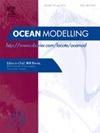The effect of shallow water bathymetry on swash and surf zone modeled by SWASH
Abstract
Submerged topography in shallow waters is fundamental in the propagation and dissipation of ocean waves in the surf and swash zones. However, obtaining accurate bathymetric data in this region is challenging due to the high temporal and spatial environmental variability. The bottom boundary condition can directly affect the accuracy of numerical models used for shallow water simulations. In this study, the performance of the SWASH numerical model in describing wave runup in the swash zone is assessed using different bathymetric boundary conditions. The first method involves using data measured in the surf zone obtained by a Unmanned Aerial Vehicle (UAV), and analyzing it using the cBathy algorithm. The second method utilizes a regular bathymetric mesh generated from Dean’s equilibrium profile combined with beach topography data. The third method relies exclusively on interpolation methods using data from deep waters and beach profiles. This interpolation approach is the most used among SWASH users when detailed or updated surf zone bathymetry is unavailable. Based on the numerical simulations performed, not incorporating data from the surf zone resulted in a 4% increase in the runup estimated and approximately a 2% difference in identifying the swash zone position. The method to obtain bathymetry through the cBathy algorithm, used in this article, is cost-effective and can be used to reduce uncertainties in surf zone numerical simulations, induced by the lack of knowledge about the bottom conditions.

 求助内容:
求助内容: 应助结果提醒方式:
应助结果提醒方式:


